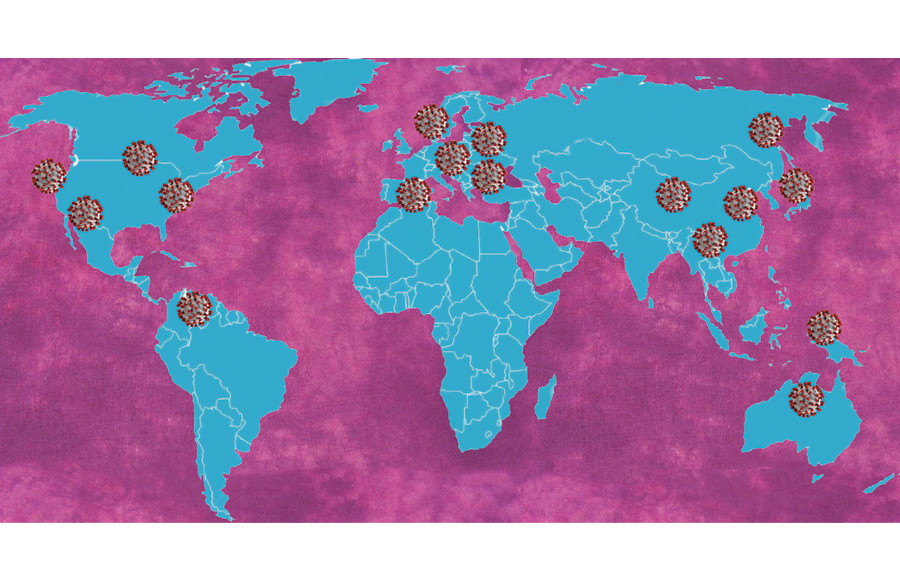
The coronavirus might as well have been designed in a lab to ravage Jewish communities. Close physical contact is not merely embedded in our tradition, it is inscribed in our history, dating back to the very origin of our nation at Mount Sinai. Judaism is not a religion best observed or practiced alone. We don’t get zen that way. We need a minyan. We need to have other people over for Shabbat lunch. We need a chavruta.
Everywhere you look is a disease vector disguised as a mitzvah, so this plague poses a different challenge for us. Already, the fear of getting sick has accomplished something even the most divisive political issues never could: It has kept people from going to shul. And this may be only the beginning. For the most part, the American Jewish community has erred on the side of caution with people’s health, and is trying to mitigate the religious losses as a secondary concern. On Purim, several synagogues broadcast the Megillah via live feed, so seniors and people with health conditions could fulfill the mitzvah of hearing the Megillah at home.
I felt comfortable attending in person, and with my parents playing it safe at a private reading, newly obligated to be present at the rowdiest possible convening. Even with kids running around and the rabbi acting out the story, it felt more somber than usual — were boomers the ones supplying the cheer all this time? — and certainly the crowd was not as large or as loud as last year’s. Still we booed Haman lustily. The parallels with the Megillah were easy to spot, even with no human malice at work in our pandemic: the will of God is obscured; we are once again praying for a complete reversal of fortune. We should probably fast, too. (Again.)
There is something beautiful about the way the virus has revealed the hidden architecture of Jewish life, a unique interconnectedness that always has made us stronger than our numbers. That network is created and re-created through the performance of mitzvot — from kissing the Torah to delivering mishloach manot to pouring wine out of a Kiddush cup into shot glasses. It is strengthened by institutions that play centralizing roles in Jewish life — from the pushke to the mikveh, from the bakery to the deli, from sleepaway camp to a Facebook group for kosher housing. Yes, Jewish geography is the essence of our community.
It’s Purim. I’m not even drunk, and I can’t tell the difference between a blessing and a curse. That indestructible network now looks like a double-edged sword. One contagious Jew goes to AIPAC, and the rest of us are touched. (Except Bernie Sanders, bli ayin hara.) If the virus is on one person’s Purim basket, it will be on everyone’s. Even if it isn’t, it is; all Jews are beholden to one another, and when one of us is sick, all of us are.
There is something beautiful about the way the virus has revealed the hidden architecture of Jewish life, a unique interconnectedness that always has made us stronger than our numbers.
The greater Jewish community is faced with the impossible task of disconnecting in the interim. If school and shul closures are already in play, who knows how much more dramatic things could become? Many people already have canceled trips to Israel for Passover. Soon we could be looking at Shacharit being led on Instagram Live and Purell added to the seder plate.
What I have found encouraging is the way the coronavirus has sprung our community into joint action at not
only the institutional level but the individual level, too. I’m talking about the ba’alei kriah who worked overtime to make sure everyone heard the Megillah this year, the people who hosted private readings, and even the folks who overcame their FOMO to stay home. This is the same hidden architecture in action, but it’s a more dynamic, democratic egalitarian manifestation. In this format — a temporary one — we all have a role to play in leading our community.
The Jewish social fabric will endure this global pandemic not in spite of how hopelessly tangled our community is, but because of it. The coronavirus has killed thousands in just a few months; it will take miraculous coordination of global and local planning to reverse its spread. But it may as well have been designed in a lab to bring out the best in us. It newly challenges each thread in the tapestry not to pull apart, to instead find new ways to adhere to one another and to God. Those solutions amd connections don’t have to be temporary.
Louis Keene is a writer living in Los Angeles. He’s on Twitter at @thislouis.






















 More news and opinions than at a Shabbat dinner, right in your inbox.
More news and opinions than at a Shabbat dinner, right in your inbox.